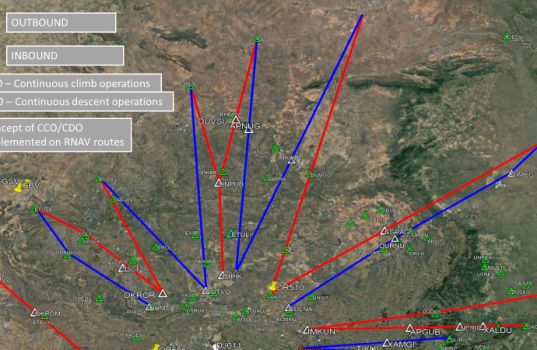ATNS implements new airspace efficiency procedures
Johannesburg, South Africa: 1 October 2020. Air Traffic and Navigation Services (ATNS) SOC Ltd has and continues to engage the South African aviation industry through various forums in order to define and implement airspace efficiency procedures that will enhance operational efficiency whilst improving safety performance.
ATNS is implementing an airspace management efficiency initiative, known as the Gauteng Airspace Performance-Based-Navigation Plan (GAPP) to assist in the recovery of the industry post-Covid19 pandemic.
The main aim and objectives of GAPP are to mitigate the impact that the Disaster Recovery initiatives implemented by the Government have on aviation, which is primarily to minimise the spread of the pandemic within South Africa and beyond.
GAPP is the reviewing, re-designing and enhancement of current procedures within the Gauteng and surrounding airspace with a specific focus on O. R. Tambo International Airport (known in the aviation space as FAOR) based on global Performance-Based Navigation principles.
Increased safety where separation is achieved by deconflicting routes by design; more holistic participation in the design phase by the Air Traffic Management community which includes Air Traffic Controllers and Pilots among others, and an increased capacity during Instrument Meteorological Conditions/Low Visibility Operations are but some of the project goals that ATNS has set in order to meet its stakeholders’ expectations.
ATNS Acting CEO, Dumisani Sangweni says the GAPP procedures translate into cost savings, especially focussed on reducing airline operational costs. He added “there will be better-enhanced predictability for airspace users that will essentially allow for shorter routes to and from OR Tambo International Airport resulting in reduced travel time; increased operational efficiency due to optimal climb and descent profiles. It means less fuel burn, reduction in emission during take-offs and landings, and reduced noise impacts due to dispersion in an effort to minimize adverse environmental impacts”.
Related Posts
« Sector Statement Group welcomes Berlin Declaration to support international rail freight and presents its progress report IDC to Explore the Evolving Priorities for Digital Transformation at Virtual CIO Summit in South Africa »



























